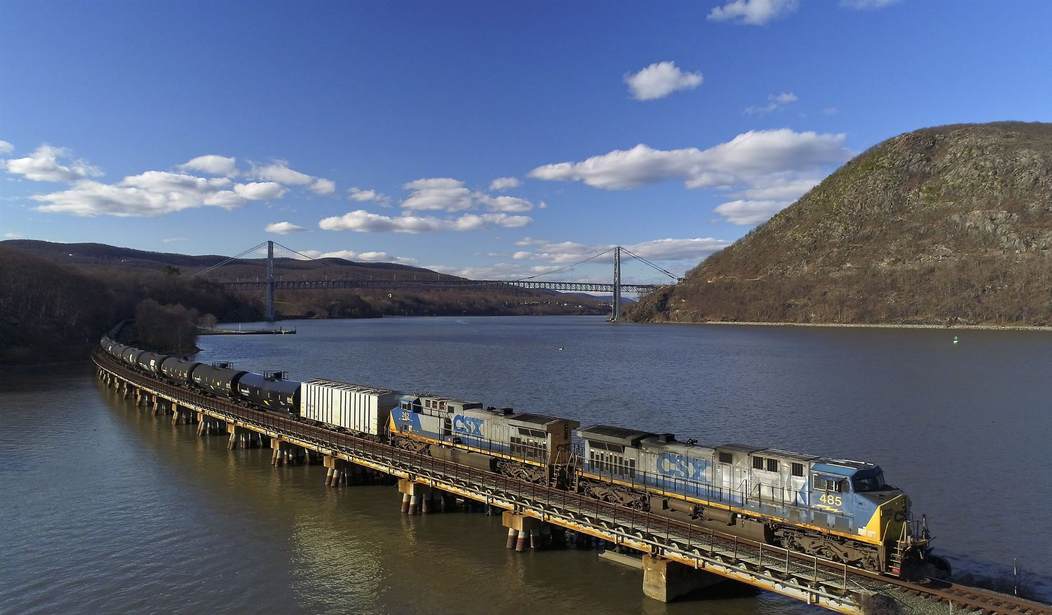As the son of multiple generations of railroad workers on both sides of my family, I’ve naturally maintained a lifelong interest in the rail industry and its welfare.
Accordingly, recent decades have offered great pleasure in that regard, as our nation’s railroad sector has flourished alongside the American economy. Indeed, rail has played a central role in propelling the nation to unprecedented levels of prosperity by transporting the raw materials, food, energy sources, and manufactured goods that constitute its material lifeblood.
Unfortunately, some in Washington inexplicably seek to reimpose a heavy regulatory regime upon the nation’s railways, which would jeopardize that success.
Namely, authorities like the Surface Transportation Board (STB), which adjudicates rail transportation rate, service and access issues – and which currently claims two vacant seats to soon be filled – are considering proposals to impose crippling price controls, micromanage railroad earnings, and force railroads to open their own infrastructure and assets for use. These proposals call to compete railroads and allow litigious customers to challenge the rates they’re charged in order to receive a cap, regardless of market realities.
These changes would instantly threaten the railroad sector’s prosperity, which was by no means inevitable or assured.
In 1980, both the American economy and the railroad industry teetered after years of malaise and bureaucratic limitations. Numerous legacy industries had withered or disappeared entirely by that time, and railroads could have suffered the same fate.
Recommended
That’s particularly true given the headwinds that railroads faced. While rail endured the increasingly stifling limitations of the Interstate Commerce Act (ICA) of 1887 and the rate regulations of the Interstate Commerce Commission (ICC), competing automobile and airline industries flourished after World War II. As our highway system expanded and aviation rapidly advanced, passenger train service evaporated, and numerous railroads went out of business. Meanwhile, rail speeds and efficiency plummeted as financial struggles rendered infrastructure improvements impossible.
By 1980, the United States approached a fork in the road. Fortunately, the path of deregulation was chosen, allowing private market forces to revitalize the industry.
By passing the Staggers Rail Act of 1980, Congress replaced the ICA’s regulatory structure that had weighed down the sector since 1887 – and introduced the same sort of deregulation that allowed other realms of the American economy to reignite. Instead of federal bureaucrats determining what services railroads could offer, what rates they could charge, and what routes they could employ, the railroads themselves were free to make those decisions based upon cost-efficiency.
Forty years later, the Staggers Act has proven a resounding success.
Instead of disappearing like so many other American legacy industries, today's rail industry continues to flourish in good times and bad. Railroads operate across a nearly 140,000-mile network, and the Department of Transportation (DOT) anticipates another 30 percent growth in rail volume by 2040. In terms of cost-efficiency, today’s railroads transport nearly twice the freight for the same price as 40 years ago when the Staggers Act passed.
Additionally, rail now transports one-third of all U.S. exports. Its accident rate has fallen 34 percent in the past two decades alone and it moves one ton of goods over 470 miles on a single gallon of fuel – far surpassing the fuel efficiency of ground trucks. Rail supports approximately 1.5 million jobs, with industry employees earning 61 percent more than average U.S. workers.
Moreover, unlike trucking, shipping, and airline competitors, American railroads operate almost entirely upon infrastructure that they themselves have built, paid for, and maintained. Railroads have poured over $700 billion into domestic infrastructure improvements since 1980. In contrast, competing industries rely primarily upon infrastructure paid for and maintained by taxpayers, including highways, harbors, and airports. Amid the coronavirus pandemic, railroads have maintained supply chains without a government bailout – directly reflecting the industry’s longstanding position of strength.
Simply put, the rail industry stands as a remarkable success story for which we should be grateful. That’s the direct result of the Staggers Act and its deregulatory framework. Proposals to reverse this framework would return America’s rail network to the pre-1980, pre-Staggers Act environment that once pushed it to the brink of extinction.
Instead of tolerating that possibility, we must preserve the approach that revitalized our rail sector and unleashed its innovative forces. The best way to accomplish that is to stick with what has worked for 40 years: the Staggers Rail Act’s successful deregulation.

























Join the conversation as a VIP Member